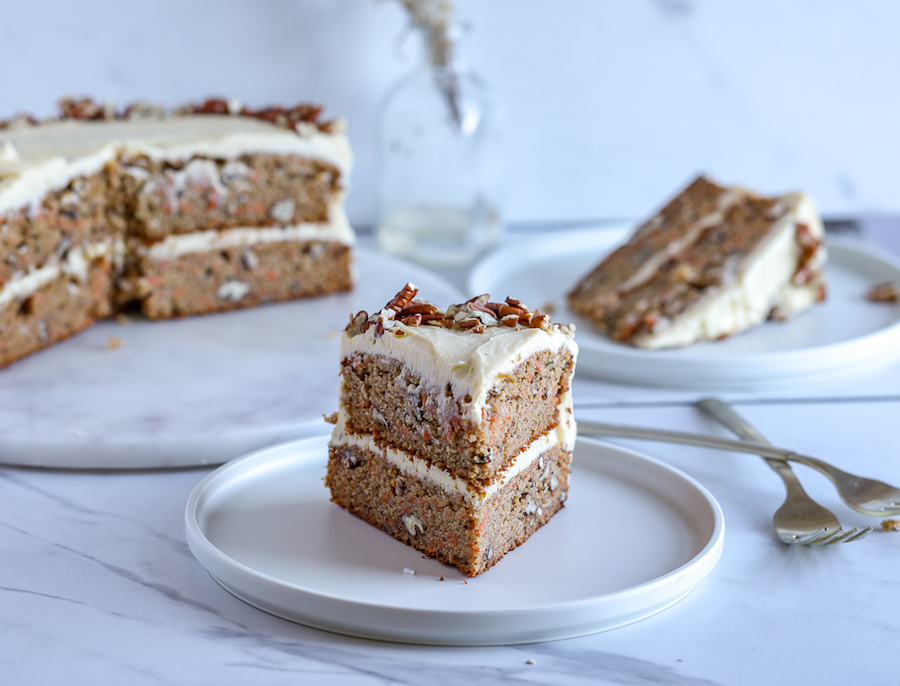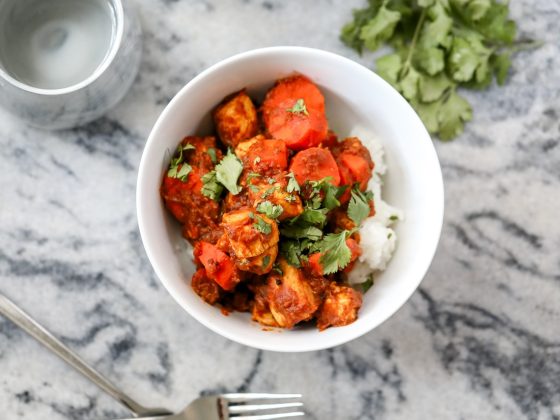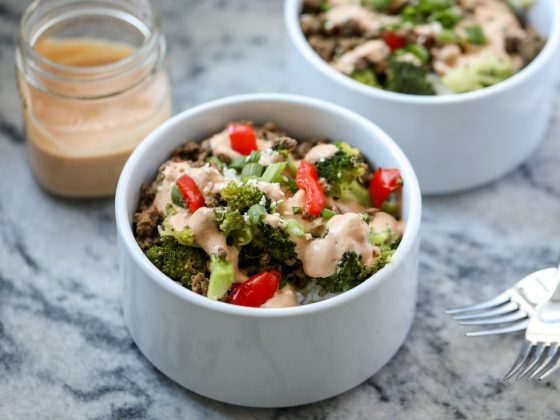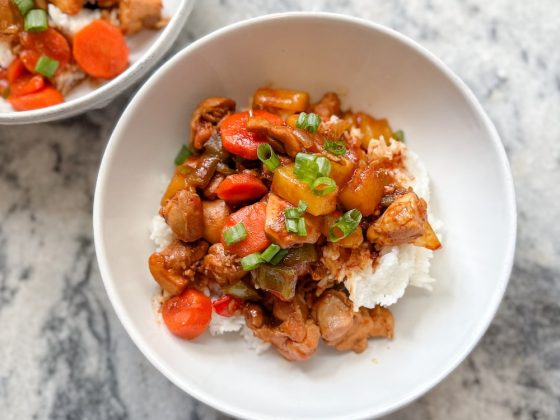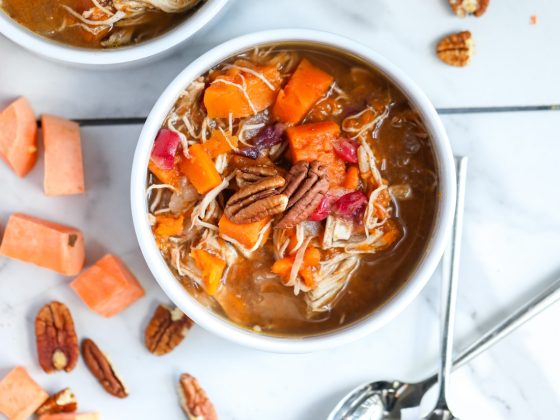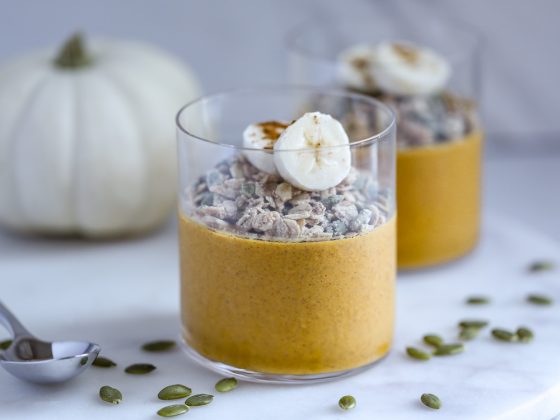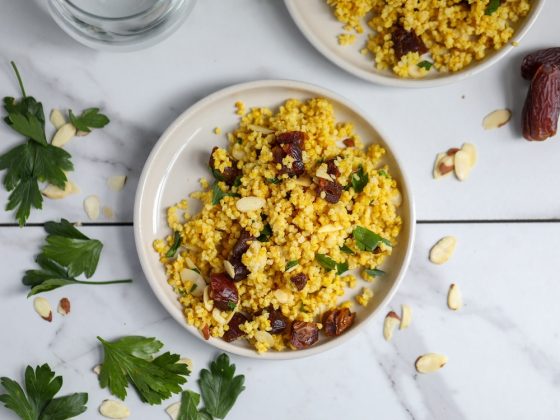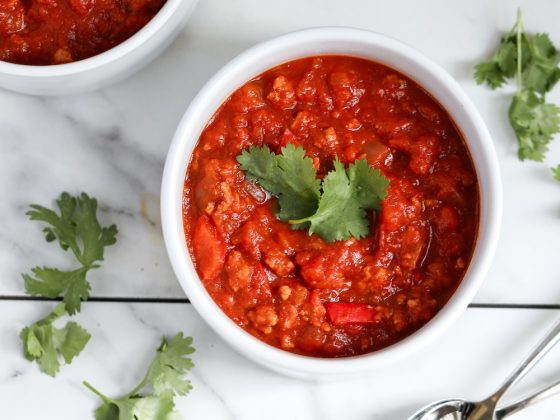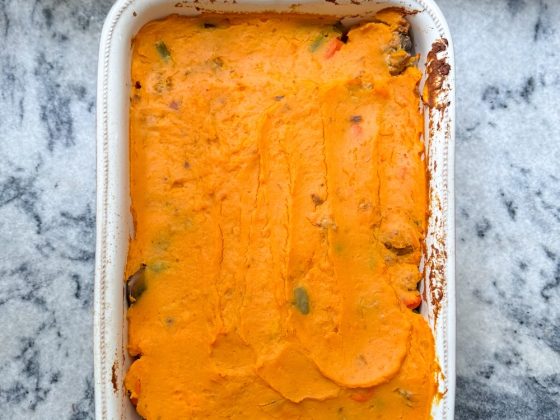I tend to think all of the cake recipes I post on Healthified Magazine are healthy, but I am up-leveling my definition of a nutritious dessert. While I primarily bake both gluten-free and dairy-free, I am playing around with alternative sweeteners to better balance my blood sugar so I can enjoy my baked goods. I wear a Levels continuous glucose monitor, and have really been watching my sugar intake, so being able to witness in real time how much these lower-sugar sweet treats better support my blood sugar is empowering.
What makes this carrot cake healthy?
Many people confuse traditional carrot cake with being healthier because it contains, well, carrots. While it may be true that incorporating the shredded vegetable adds more nutrition than say, a traditional chocolate cake, it doesn’t make it healthy for your, per se.
I define a healthy baked good as a food that brings something to the table so to speak, through the use of ingredients that contain nutrition. Essentially, nutrients are found in vitamins and minerals that provide our body with benefits. Traditional baked goods do quite the opposite. In fact, the use of refined sugar not only contains zero nutrition, but is an anti-nutrient, meaning through the metabolic process, it actually robs your body of nutrients; additionally, it promotes more hunger and hormonal imbalances. When we eat white sugar for example, our bodies are left with less B vitamins than before.
The use of traditional wheat-based flours, while maybe containing some fiber, spike your blood sugar (especially when consumed in conjunction to white sugar), leaving you on a cycle of hormonal mayhem. This only leaves you craving more carbs and sugar as a result, which can negatively impact your physical and mental health.
So when I say “healthy cake,” the recipe typically calls for more ingredients with nutrition, than those without. These ingredients usually fall within three main categories:
Flour. The flours comprise the base of most baking recipes. I like to use both gluten-free and grain-free flours that not only will keep blood sugar levels steady, but also contain more protein and fiber than traditional white or wheat flours.
Sweetener. This is the area that can use the most upgrading. While I have been baking with more blood sugar balancing sweeteners for years (primarily coconut sugars in more granulated and liquid forms), I am experimenting with alternative sugar-free sweeteners such as monk fruit, allulose, and erythritol.
Fat. In traditional baking, butter or vegetable oils are the primary fats used in recipes. I do sometimes use grass-fed butter in my baking, especially if the recipe is low carb and sugar-free. Coconut oil, avocado oil, and egg yolks are some sources of fat that are on the healthier side. Ingredients such as fruit and vegetable purees (applesauce, avocado, sweet potato), are also examples of more nutritious substitutions for fats.

Across these categories, for this particular carrot cake recipe, I used the following upgrades:
Flour: I chose a combination of almond flour and gluten-free oat flour. I have been baking more and more with oat flour as I love the heartier texture and nutrition it provides. It also personally agrees with me, and lends more fiber than other flours, which is a win in my book. In previous carrot cake recipes, I have used other gluten-free and grain-free flours, such as brown rice, white rice, quinoa, and chickpea flour. I think any of those would work in this recipe. If you are looking for a grain-free version, you could try the following flour ratio: 2 1/2 cups almond flour, 1/4 cup coconut flour, 1/4 cup tapioca starch. I haven’t personally tested it this way, so don’t quote me on that.
Sweetener: As mentioned above, up until very recently, I have been primarily baking with coconut sugar, coconut nectar, maple syrup, and some monk fruit. Over the past year, I have dabbled in lower-sugar and sugar-free baking. This recipe is a prime example, and uses a combination of granulated monk fruit and allulose. My tastebuds have evolved enough where I prefer baked goods that aren’t overly sweet, but if your taste buds still need some training wheels, perhaps use 1/2 cups monk fruit or allulose, and then 1/2 cup coconut sugar or another granulated sweetener of choice. You can also substitute with 1 cup of coconut sugar.
Fat: I love how this recipe is oil-free. I have found that not many recipes need oil, especially when baking with eggs. Almond milk (or another dairy-free milk) with a fruit or veggie puree (like in this carrot cake recipe) serves the purpose. I will often use coconut oil in gluten-free and vegan recipes (with absence of eggs) in order to provide moisture and a little binding, but since this recipe does use eggs, the combination of almond milk and applesauce works just as well.
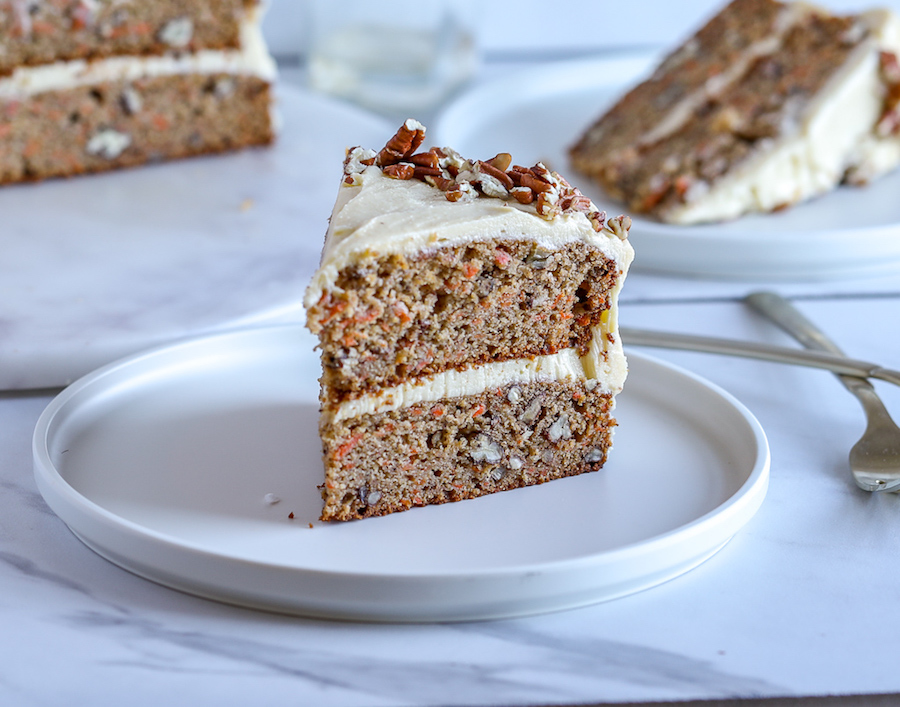
Tips for making this healthy carrot cake
My number one tip for baking any recipe, is to set your mis-en-place. This is just a fancy French term for measuring and laying out all of your ingredients before you start. Grating the carrots is the most laborious part of the process, but once you complete that part, the cake comes together easily. Begin by mixing all of the dry ingredients in a large bowl, before whisking together the wet ingredients. Then you pour, beat, add the carrots and chopped nuts, and beat again. After all of that, it will simply take some patience while you wait for the batter to rest (don’t skip this step), and your cake to bake and cool. The cake should be completely cooled before you frost. That takes about an hour, two to be safe.
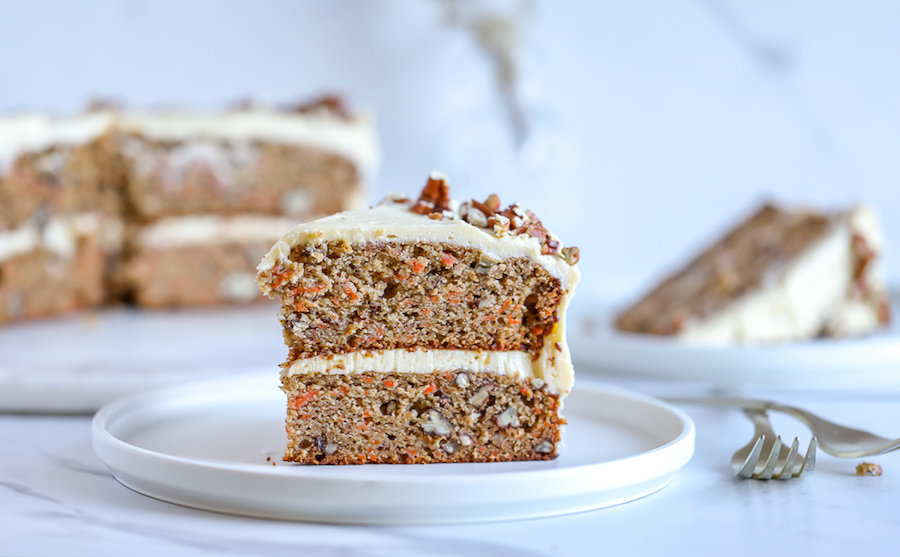
Planning and prep
Because you have to grate a few carrots, allot about 20 minutes to prepare. When you set out all of your ingredients ahead of time, it might even take less than 20 minutes. Waiting for the cakes to completely cool before frosting is probably what you will need to plan for the most. Know that this cake can be baked and enjoyed in the same day; depending on what you have going on that day, when you start baking mid-morning or early afternoon, you will be eating it by dinner time. If this cake is for a brunch or shower, I suggest baking it the day before, storing it in a cake keeper overnight. Don’t refrigerate it overnight, as the frosting will harden and not be as enjoyable in my opinion.
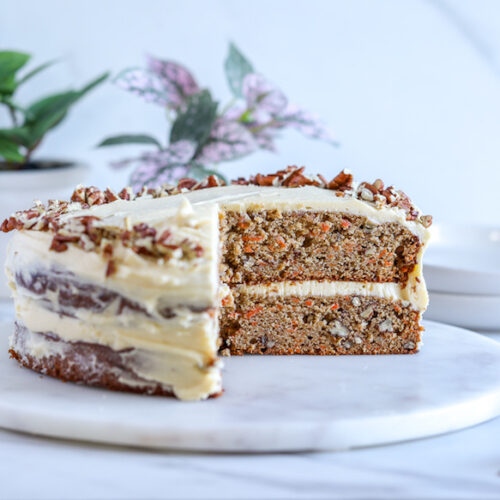
Healthy Carrot Cake {Gluten-Free, Dairy-Free, Sugar-Free, Oil-Free}
Equipment
- box grater
- Mixing bowls
- Hand beater or stand mixer
- 2 8-inch cake pans
Ingredients
For the cake
- 1½ cups almond flour
- 1½ cups oat flour or other gluten free flour of choice
- ½ cup granulated monk fruit
- ½ cup granulated allulose
- 3 teaspoons ground cinnamon
- 2 teaspoons baking powder
- 1 teaspoon baking soda
- ½ teaspoon sea salt
- ½ teaspoon nutmeg
- 4 large eggs beaten
- ¾ cup almond milk
- ¾ cup unsweetened applesauce
- 1 teaspoon vanilla extract
- 2 cups grated carrots from about 3 large or 4-5 medium carrots
- 1 cup chopped pecans or walnuts; plus more for garnish if desired
For the frosting
- 1 cup grass-fed butter or vegan butter room temperature
- ½ cup cream cheese or vegan cream cheese room temperature
- 1 cup powdered monk fruit
- 1 teaspoon vanilla extract
Instructions
- In a large mixing bowl or bowl of a stand mixer, combine the almond flour, oat flour, monk fruit, allulose, cinnamon, baking powder, baking soda, sea salt, and nutmeg. Stir to blend.
- In a separate bowl, whisk together the eggs, almond milk, applesauce, and vanilla extract until creamy.
- Pour the wet mixture into the bowl with the dry ingredients and beat until a batter is formed. Add the grated carrots and chopped pecans. Beat again. Let the batter rest for 20 minutes.
- Meanwhile, preheat the oven to 350 degrees F. Line the bottom of two 8-inch cake pans with parchment paper. Equally divide the batter between the two cake pans. Bake for 35 minutes, or until a toothpick inserted comes out clean. If using a food thermometer, the internal temperature of the cakes should be about 180 degrees F. Allow the cakes to fully cool in the cake pans before removing them. They should be completely room temperature before frosting.
- To make the frosting, combine the butter and cream cheese in a large bowl. Beat them together until combined and fluffy, about 1 minute. Add the powdered monk fruit and vanilla extract and beat again, using a spatula to scrape down the sides as you need to. To frost: spoon about ⅓ of the frosting on top of one of the cakes and spread to all edges. Place the other cake on top, and use the remaining frosting to cover the top of the cake and around the sides. Garnish the more chopped pecans if desired.
Notes
